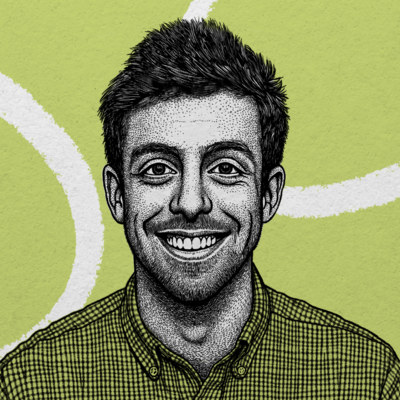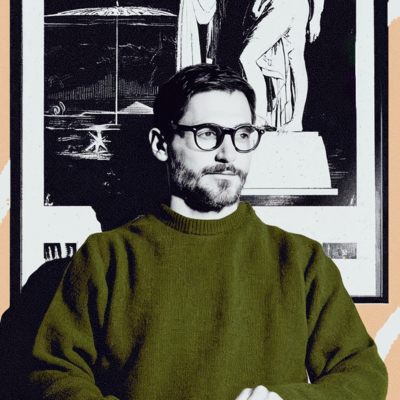
Made Possible By: Fundrise
Fundrise is an easy-to-use platform that lets you build, grow and manage a diversified portfolio of high-end private real estate projects across the US.
They have become America’s largest direct-to-investor real estate platform by digitizing, automating, and integrating almost every aspect of the private real estate investment industry in order to maximize your long-term return potential.
With Fundrise, you can achieve true portfolio diversification at the touch of a button. Find out how 210,000+ investors are diversifying their portfolios today:
For most people negative emotions are like being stuck in neck-high water. We have the feeling that if we just tense up, stand on our tiptoes, and wait it out while we keep focusing on what we need to do, the water will eventually recede. Usually, it does.
But sometimes, for some people, the water keeps rising until first our mouths are submerged, and then our noses go under. It keeps rising until we feel like we are literally drowning. We experience a burning sensation in our chest, which demands to be filled again and again with air until we’re gasping loudly and clutching our rib cage while our loved ones stand over us wondering if they should call an ambulance.
This is a panic attack.
When it first happened to me, it felt like a terrifying one-time event. When it kept happening over and over again, it felt like something that might ruin my career—and maybe even my life.
It took me almost 10 years, but I eventually learned that I could start to see my first panic attack not as the end of the road for me, but as the start of a new way to be in the world. A way to play in the deep water, rather than paddle desperately to avoid it.
This is the story of my first panic attack, what I learned about the science of panic, and what helped me tame it.
My first attack
In 2014, I was in the middle of a big transition. I sold a startup I had co-founded, graduated college, and moved to New York all in the span of a few months.
There was a lot to like. I suddenly had money. I gave myself an unlimited book budget and ate out guilt-free whenever I wanted to. Pega was an ideal acquirer. They are a big public company, and they gave me the budget to hire a larger development team so we could build more features more quickly. They also gave me the freedom to run the product the way I wanted. I was hopeful that we could finally sell what we’d built to the big companies we’d always dreamed would love it, but who would hardly give us the time of day when we were a small startup.
You might expect founders in this situation to feel great. I expected that, too. Instead I felt terrible.
After the acquisition, my identity as a founder evaporated. It was much harder for me to explain what I did when I met people. I had money, yes, but I was terrified it was the last money I would ever make, so I lived with roommates in a rundown apartment. Family members were suddenly asking me for financial support in ways that were very hard to refuse. I could no longer ignore all of the personal emotional issues that I had avoided while I was running the company, and which had now become more dire.
It was Michael Phelps syndrome: after he won those gold medals he was so depressed he couldn't get out of bed. I can relate. It’s cliché, but once you achieve a big goal, you lose the thing that gives your life shape and meaning. Your self-esteem collapses around you like a tent without a tentpole.
This is kind of embarrassing when it happens to you. I never intended to participate in the privileged melodrama of the success-doesn’t-make-you-happy-money-doesn’t-solve-all-of-your-problems cliché.
But I believe that by allowing myself to excavate the ecology of my emotions, I’ll be able to understand that day better. I’ve come to think that it will give the experience some meaning and, maybe, allow me to unearth and resolve whatever it was that led my body to revolt against me. I think that will help me, and I hope it will help you, too.
. . .
It was a normal day: after an early morning call from bed with our dev team in India, I got up and, still in pajamas, walked into my living room to start a demo with a big insurance company, John Hancock. (You know, the guy who put a giant signature on the Constitution? He also, apparently, had an insurance company.)
Our product was a co-browsing tool—basically screen sharing for customer service agents. If a customer has a problem with a website and calls in for support, co-browsing allows an agent to help them through the site in real time, without any extra downloads or installations.
Customer service agents are frequently trying to explain things to customers who don’t understand computers, or how to follow instructions. (A classic: an agent asks a customer to open a new window in their browser. The customer proceeds to get up and open the window in his house.) Co-browsing lets agents diagnose and resolve issues for customers more quickly—at least in theory.
This was one of the first demos I’d done since the acquisition, and I was feeling a sense of existential dread. I pushed away the sneaking post-acquisition imposter syndrome that filled me with the sensation that my product was trash and I had gotten away with murder by selling it. I walked out of my bedroom to greet my then-girlfriend. She was sitting at the dining table paging through a medical school study guide.
I give her a kiss, and she motions for me to sit down. “I can’t,” I say. “I have to get on this call.”
She puts out her hands for me to hold. I do the quick sweat test: running my forefingers along my palms to measure their moisture. Result: a decent amount, but I can’t wriggle out of this one. I put my wet hands in hers. I can see her face change as we touch.
“Feeling okay?”
“Yup,” I lie and quip, “Excited to close some deals.”
She looks at me quizzically. “You sure you’re okay?”
“Totally,” I say with a tight smile. I settle onto the couch in the living room and prepare to dial in to the meeting when the blue chat bubble pops up on my Microsoft Link.
“You ready for this, big guy?” It’s Roy, the sales guy on the John Hancock account. “I told them all about you last week, and they’re excited. Runway is cleared for landing—all you gotta do is hit the target.”
I send Roy a thumbs up and rub my temples. He’s well-meaning, but it’s not helping me feel better. Roy’s presence on this call is like your mom watching a presentation at school. On the surface it’s supportive, but in reality, it ramps up the pressure to perform.
I close out of the chat with Roy, and the WebEx starts. The John Hancock executives seem excited. “So this thing is going to decrease handle times?” one of them asks. Handle time is the amount of time it takes, on average, for a customer service agent to take a call from start to finish.
“That’s the idea,” I say. Technically it’s not a lie, but I feel a twinge of guilt saying it. The truth is that we haven’t found the perfect customer for co-browse yet, because it's hard to train agents to remember to use it. If you’re an agent, and you’re dealing with an irate customer who can’t figure out where to go on the website, you’re more likely to reach for your most reliable tool—talking slowly and clearly with a friendly tone—than some complex gizmo like co-browse.
The call goes silent, and I know it’s time for me to start my pitch. I do a sweat check. Palms are gushing.
Just keep going. It’ll be fine once you start talking. I think to myself. I’m usually right. It’s in those first few moments when I have the stage and everyone is waiting on me that my anxiety peaks. But a second later it’s over, and I’m usually enjoying myself. On the other side of the anxiety peak is an experience where time slows down, and everyone is hanging on each word I say. It’s a magical kind of flow state. That’s where I’m trying to get to.
So I start talking. I explain what co-browsing is. I can feel the anxiety spike and subside. But it doesn’t subside all of the way. I keep going, but my brain isn’t thinking about the presentation anymore.
It’s decided that there’s a problem, and it’s searching for its source—trying to get the anxiety to quiet down. Worse, it’s also wondering: can anyone else tell how nervous I am?
So my brain does what an anxious brain does. It runs a test to see how I’m being perceived. My mind flashes to the John Hancock executives on the other end of the line.
I can almost see them huddled around a conference room in Boston, 18th-century powdered wigs on their heads, clutching large quills, and wearing starched shirts and khakis from Jos. A. Bank—not formal so as to keep up with the youth, but not too casual because insurance is serious business.
“Are you nervous, kid? I think you’re nervous. You know, you’re not going to get that famous John Hancock from us if you’re nervous,” they say.
The anxious feeling intensifies. It begins to travel from my stomach toward the bottom of my rib cage.
I get up to pace. Maybe that will help.
It doesn’t. Instead, my mind flashes to someone else on the call: Roy.
“This is it? This is the kid we acquired?” he says, squeezing a pink stress ball. “I teed it all up for him. All he had to do was land the plane!”
I pace down the hallway toward the front door. My breathing is now irregular. I’m starting to feel strangely out of breath. I’m sucking in air, but it doesn’t relieve me of the feeling that I need to breathe in more. So I’m holding in the air as much as I can, not wanting to exhale too much before my next sentence.
My voice gets louder. My words come out faster. It catches the attention of my girlfriend, who is still sitting at the dining room table. She looks up at me, and our eyes meet. And then something peculiar happens: I become her. I see myself as I believe she sees me. Through her eyes, I see a scared boy, desperately trying to keep it together. Not calm or confident, but terrified, and hiding deep, dark secrets that are now plain.
I am not successful or even likable. I have no value, and I have conned my way into my position. I deserve to be alone. (What else could anyone reasonably conclude by witnessing me crumble in the face of such an ordinary phone call?) And on this call, in the sweat of my hands and the nerves in my voice, the truth is being revealed.
In that instant, the room disappears. The floor and ceiling fall away. The dirty windows zoom out into space. I see myself, still pajama’d and beslippered, floating in a vast darkness surrounded by John Hancocks, and miserable customer service agents saying Co-browse? Yeah, we have it, but I’ve never used it, and irate customers who think their disk drive is actually a large-sized retractable cupholder for diet soda drinks.
When I return to my body, I am unable to breathe. I clutch my chest. I heave great gasps of air. I try to get back to the living room couch, struggling all the while to get words out to the people on the phone. “We don’t…we don’t have any downloads or installations for the…cust…cust…”
Somehow I make it to the couch. I drop the phone. My girlfriend stops reading her textbook and rushes over. “Are you okay?” she asks. “Are you having a heart attack?”
Roy’s voice emanates from the speaker on my phone: “Dan, are you still there?”
The Only Subscription
You Need to
Stay at the
Edge of AI
The essential toolkit for those shaping the future
"This might be the best value you
can get from an AI subscription."
- Jay S.
Join 100,000+ leaders, builders, and innovators

Email address
Already have an account? Sign in
What is included in a subscription?
Daily insights from AI pioneers + early access to powerful AI tools










Comments
Don't have an account? Sign up!